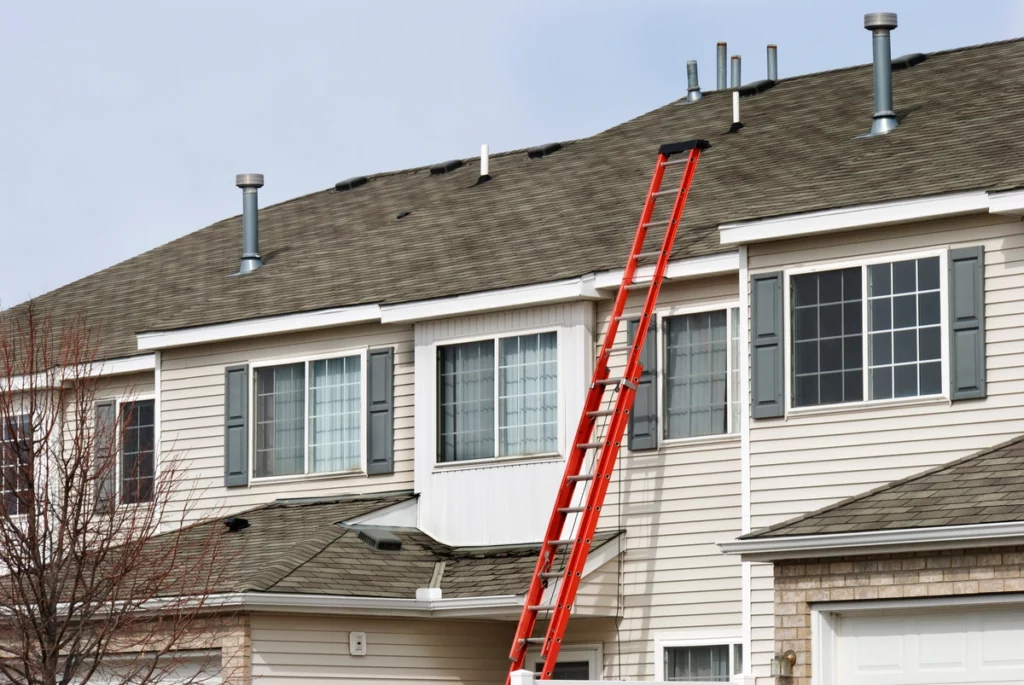Your roof is your home’s first line of defense against the elements, but sometimes it can’t hold up to the forces of nature. Storms, heavy rainfall, wind, or other unexpected events can cause roof damage that requires immediate attention. When you’re faced with an emergency roofing repair situation, it’s crucial to act swiftly and safely to prevent further damage to your property. In this blog, we’ll guide you through the steps to prepare for an emergency roofing repair without promoting DIY efforts.
1. Safety First
Before you do anything else, prioritize safety. If you suspect your roof has been damaged in an emergency, it’s best to evacuate the affected area and stay indoors. Don’t attempt to climb onto your roof or inspect the damage until it’s safe to do so. Wait for professional roofers to assess the situation, as they have the expertise and equipment to work safely at heights.
2. Call a Professional Roofing Contractor
Your next step is to contact a reputable roofing contractor. Emergency roofing repairs require immediate attention, and a professional roofing team can assess the damage, provide a temporary solution, and plan for a permanent repair or replacement. Make sure the contractor you choose has experience with emergency repairs and is licensed and insured.
3. Document the Damage
While you wait for the roofing contractor to arrive, document the damage as thoroughly as possible. Take clear photos or videos of the affected areas, both from the inside and outside, if it is safe to do so. These records will be valuable for insurance claims and for the roofing contractor to understand the extent of the damage.
4. Check for Interior Damage
Inspect your home’s interior for signs of water infiltration. Look for water stains on the ceilings or walls, damp spots in your attic or crawlspace, and any visible signs of leaks. Place buckets or containers to catch water if necessary, but remember that this is a temporary solution. A roofing contractor will need to address the source of the leak.
5. Remove Valuables and Protect Belongings
If the damage is severe and water is entering your home, remove valuable items from the affected areas to prevent further damage. Furniture, electronics, and personal belongings should be relocated to dry, safe areas. Place tarps or plastic sheets over these items to protect them from potential leaks or debris.
6. Clear Debris
If debris, such as branches or leaves, has accumulated on your roof, try to safely remove it. Use a long-handled broom or rake to clear the debris without stepping onto the roof. Avoid using pressure washers or sharp tools, as they can cause further damage.
7. Temporary Repairs
In some cases, a roofing contractor may provide a temporary repair to prevent further damage until a more permanent solution can be implemented. Temporary repairs might include sealing leaks, securing loose shingles or tiles, or tarping the damaged area. These measures are essential to prevent additional water infiltration and further deterioration of your roof.
8. Insurance Claims
Contact your homeowner’s insurance company to report the damage and begin the claim process. Provide them with the documentation you collected earlier, including photos and videos of the damage. Your insurance provider will guide you through the necessary steps to file a claim and may schedule an adjuster to assess the damage in person.
9. Avoid Scammers
Unfortunately, emergencies can attract unscrupulous individuals looking to take advantage of vulnerable homeowners. Be cautious of “storm chasers” or contractors who approach you unsolicited. Stick to reputable, local roofing contractors with a proven track record of quality work and customer satisfaction. Always ask for references and check online reviews before hiring anyone.
10. Plan for Long-Term Repairs
Once your roofing contractor has assessed the damage and provided a temporary solution, discuss the long-term repair or replacement plan. Depending on the extent of the damage, you may need a roof replacement or major repairs. Work with your contractor to develop a timeline and budget for these repairs, and be prepared for potential insurance negotiations.
Conclusion
Facing an emergency roofing repair can be stressful, but by taking these steps, you can minimize further damage, ensure your safety, and set the stage for a successful repair process. Remember, roofing repairs are best left to the professionals who have the knowledge, experience, and equipment to handle them safely and effectively. Prioritize safety, document the damage, and work with a reputable roofing contractor to protect your home and restore your peace of mind.
Oceanside Roofing Company https://www.oceansideroofingcompany.com/

